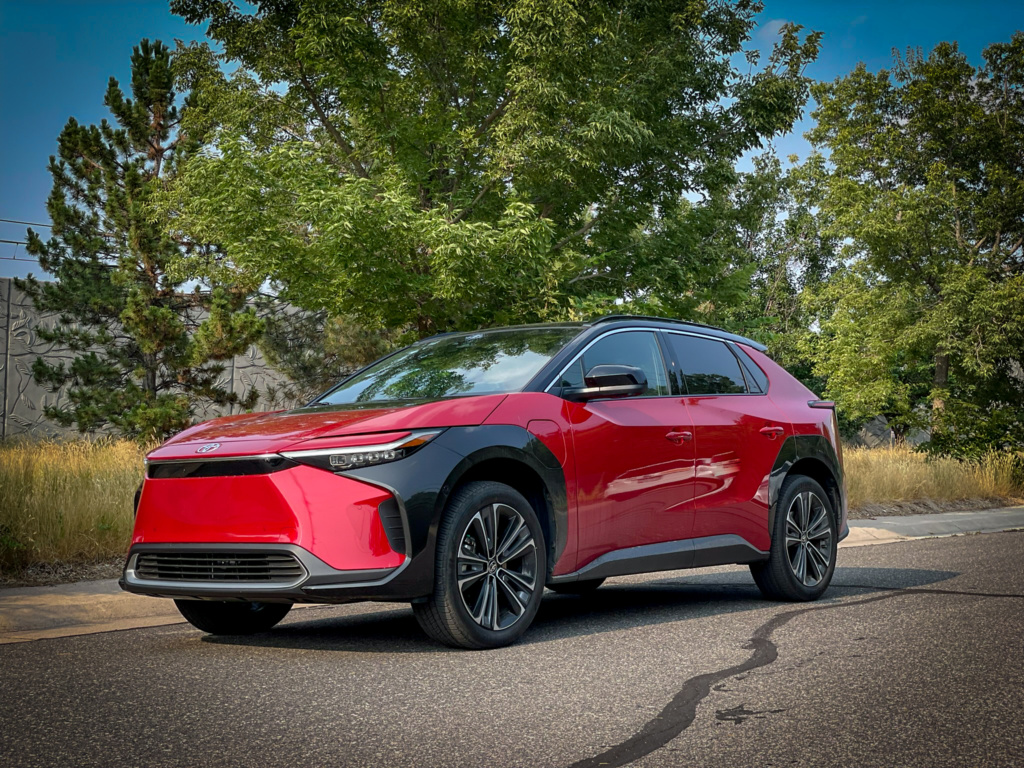
Toyota’s bZ4X fills the EV role of the company’s current, Beyond Zero theme (hence the “bZ” in its name), and merges Toyota engineering with a dedicated EV platform – a recipe for something special, however, that’s not quite what we got.
There are a few Prius design influences seen in the narrow headlights and crisp tail lights and each achieves their own modern look, but overall, bZ4X’s shape and styling lines are rather forgettable, despite those glaring contrast fender flares.
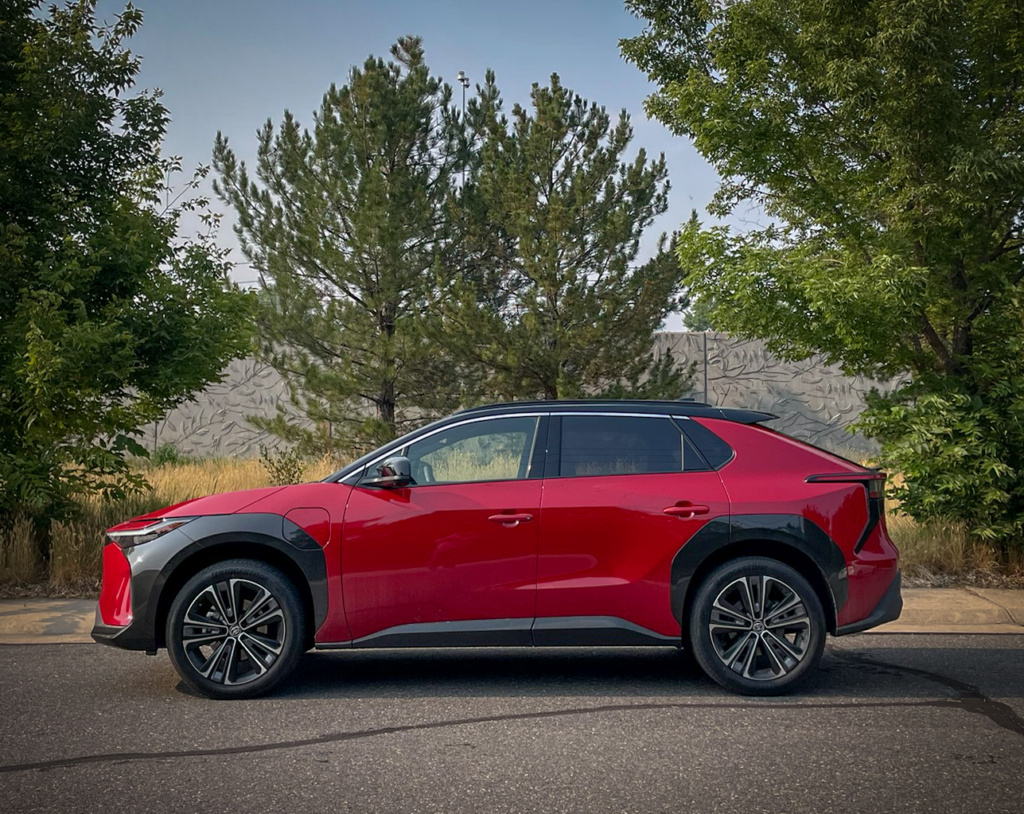
The various angles and contrasting colors feel busy and, even after a week of driving the vehicle (provided without cost by Toyota) there wasn’t a clear message of what the contrasting “fender flares” and low body sides is conveying.
The chassis and powertrain feel more middle-of-the-road capable than other EVs. That being said, the bZ4X’s dual motors (for all-wheel drive) deliver typical EV characteristics such as immediate, sustained, and strong acceleration that’s sufficient to pause any on-going conversation.
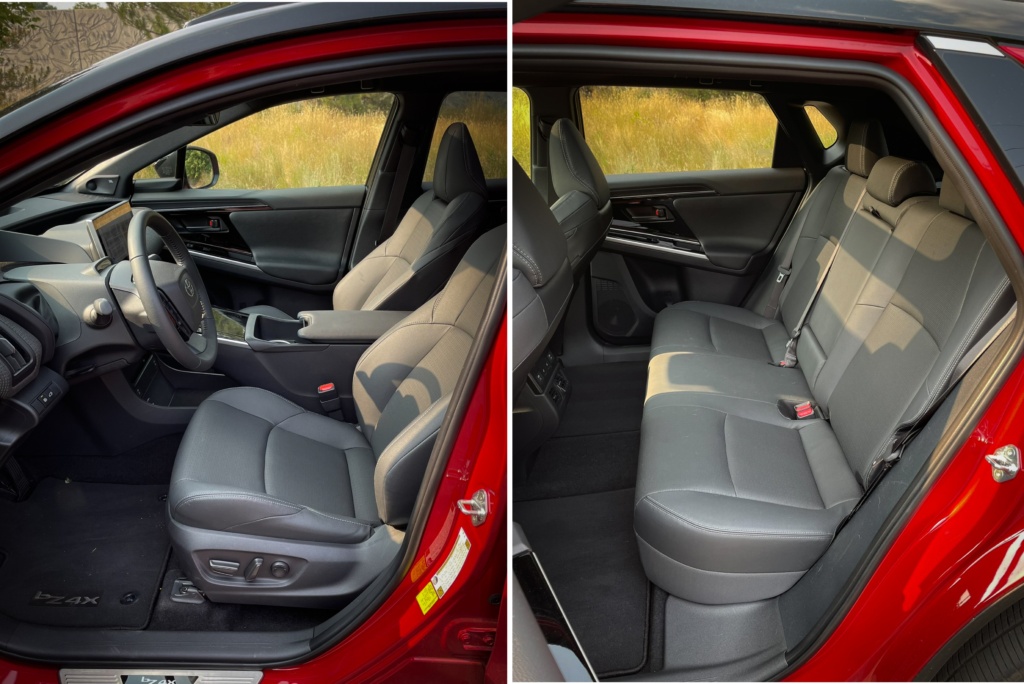
The sloping roofline and a higher-than-expected seat height (due to the battery underneath) create an unnecessary amount of effort to avoid bonking ones head when getting in or getting out. Once inside, however, outward visibility is good thanks to narrow pillars and large mirrors. Rear passengers will find comfort in the amount of space provided however, the doors frustratingly don’t open very wide.
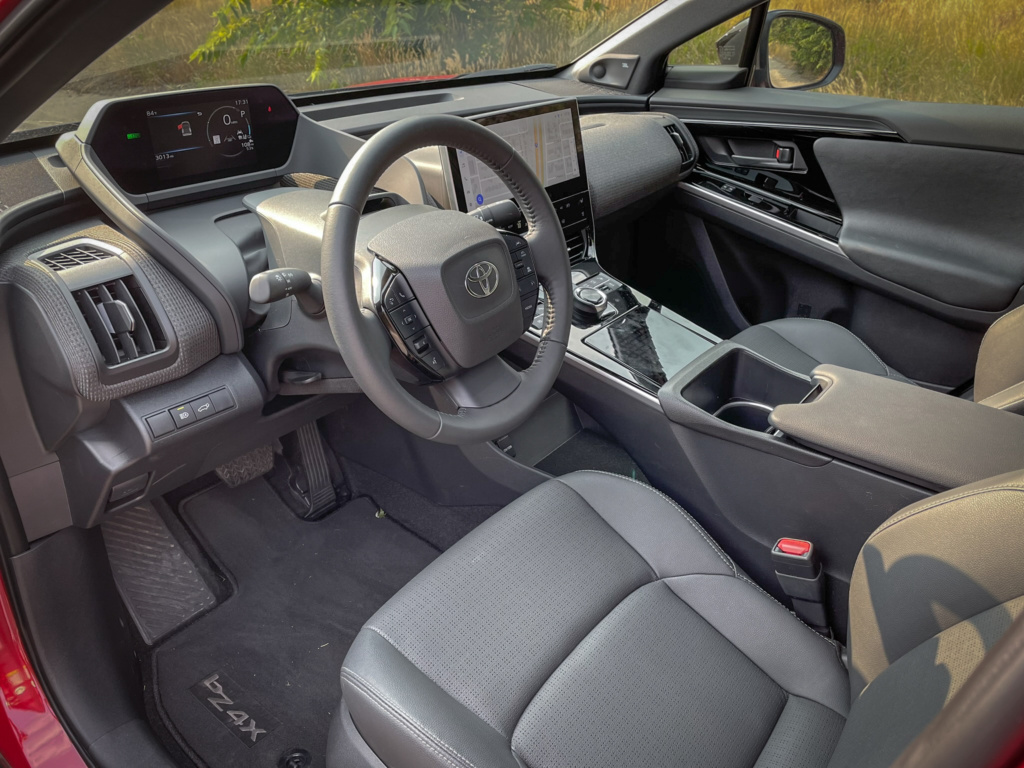
The bZ4X greets its owners with a complex-looking interior; a stark contrast to its competitors. Not only are there a plethora of assembled parts, but their surfaces feature differing grain patterns. And while the steering wheel is small in size, it still often blocks the driving display.
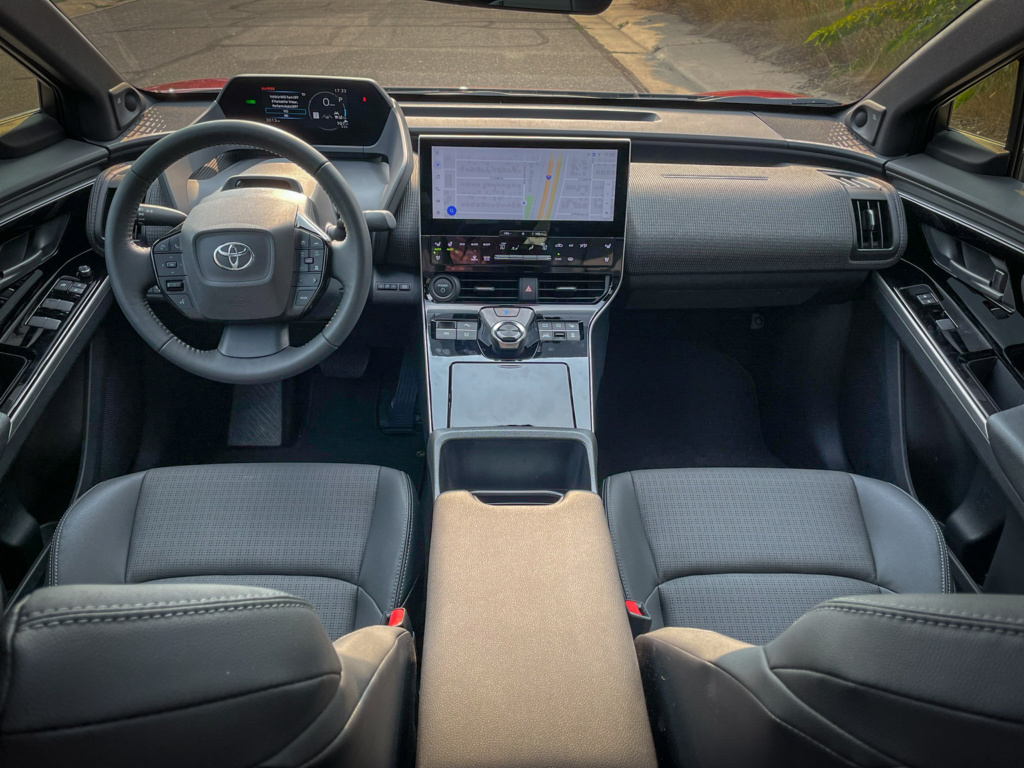
The rest of the interior also brings its own moments of frustration, primarily around the lack of space – for the driver and keeping items out of site. The center console angles into the driver’s leg unnecessarily and the glove box was taken away without providing a sufficiently sized covered space for things like a purse.
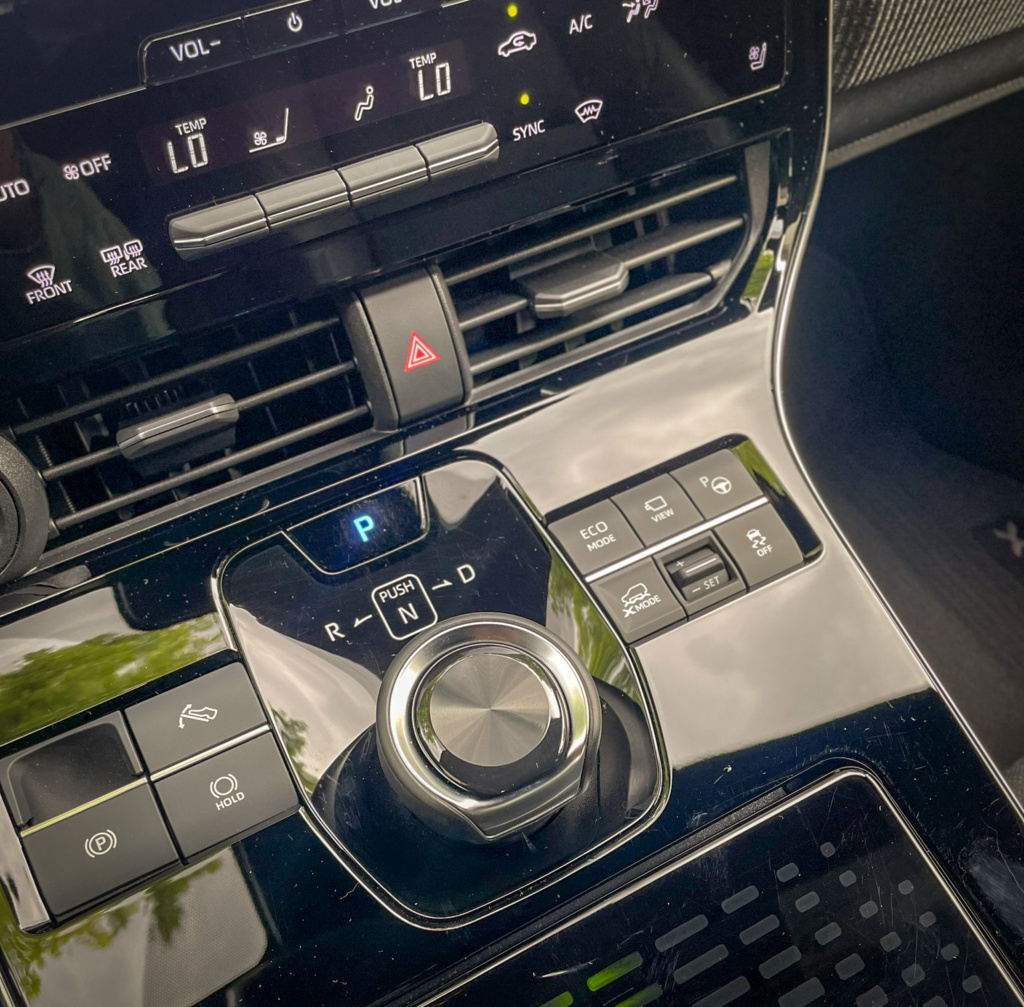
The drive selector is far less engaging than the shifter style used in the Prius but at least it can be operated without looking at a touchscreen or picking among a row of buttons. Its compact design affords space for several large buttons for important drive control features such as downhill assist and Subaru’s X-Mode terrain-specific traction control system. Yes, the Subaru Soltera is a near twin of the bZ4X as the two companies partnered for the development process.
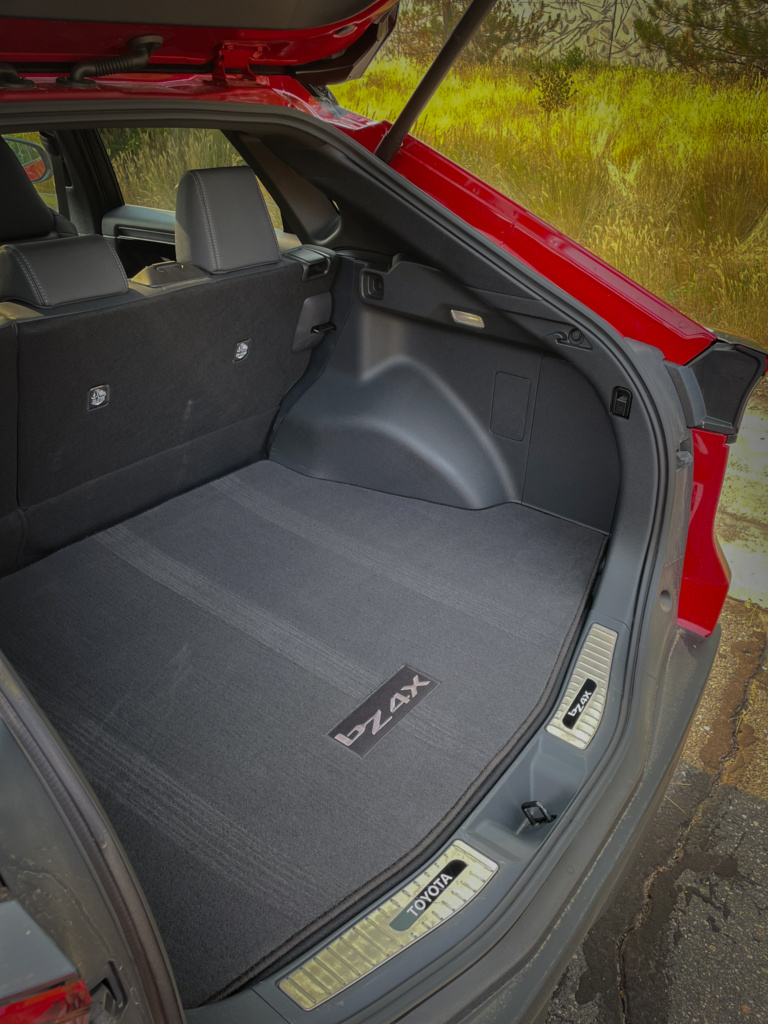
The bZ4X features a hatchback-style tailgate and while the sloped roofline cuts into overall capacity, it remains spacious.
For extended road trips, the bZ4X’s 230 miles of range and recharging rate of about 5 miles per minute at a high-capacity station will be sufficient only for those prepared for the compromises of the EV life/drive-style. For handling more predictable local driving duties, an at-home charger can fully recharge the battery in less than 10 hours.
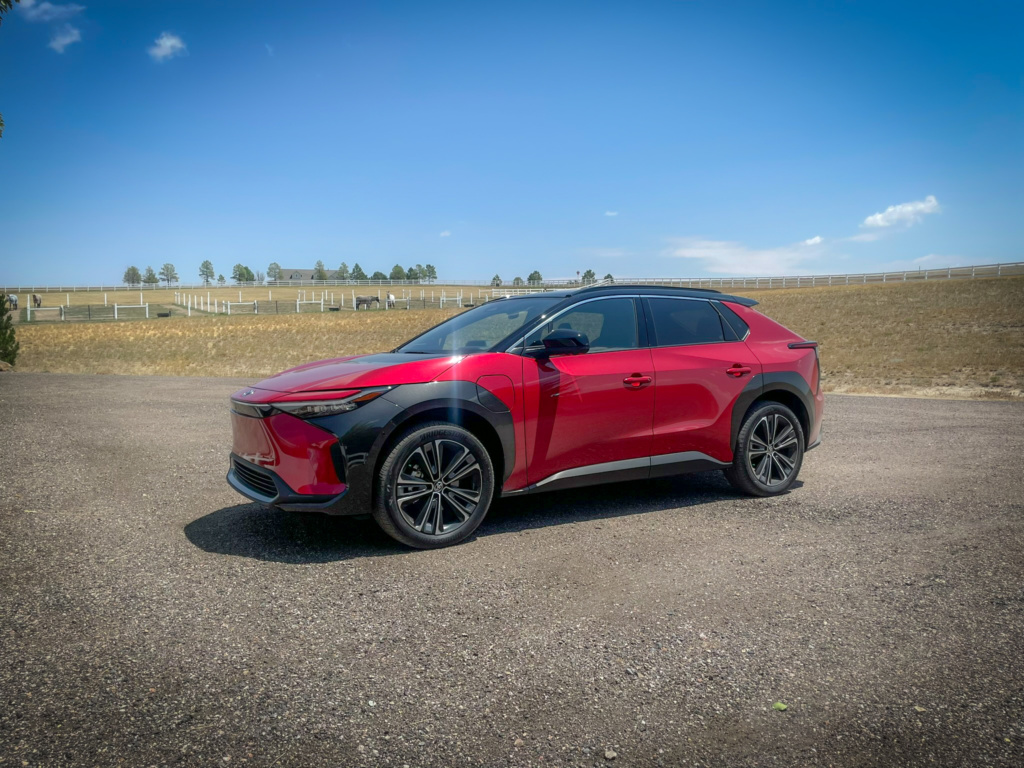
The bZ4X lands in the market at a time when gas is convenient and easily sourced while EVs are left with the frustrating reliability and availability of fast-charging stations. It further highlights an EV’s rated range and recharging speed.
The bZ4X’s sub-$40,000 base price includes obvious compromises that some of its competitors don’t and ultimately, the bZ4X feels more like Toyota’s stop-gap EV than a leader in innovation.
